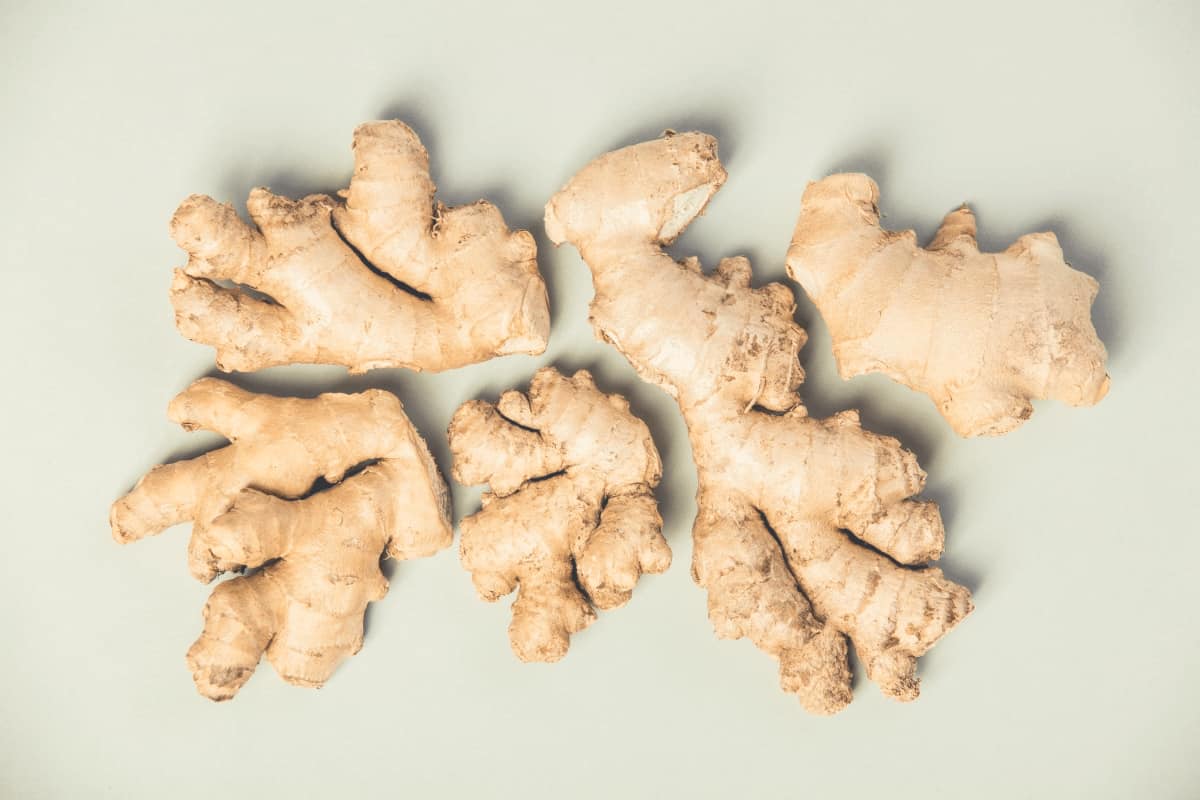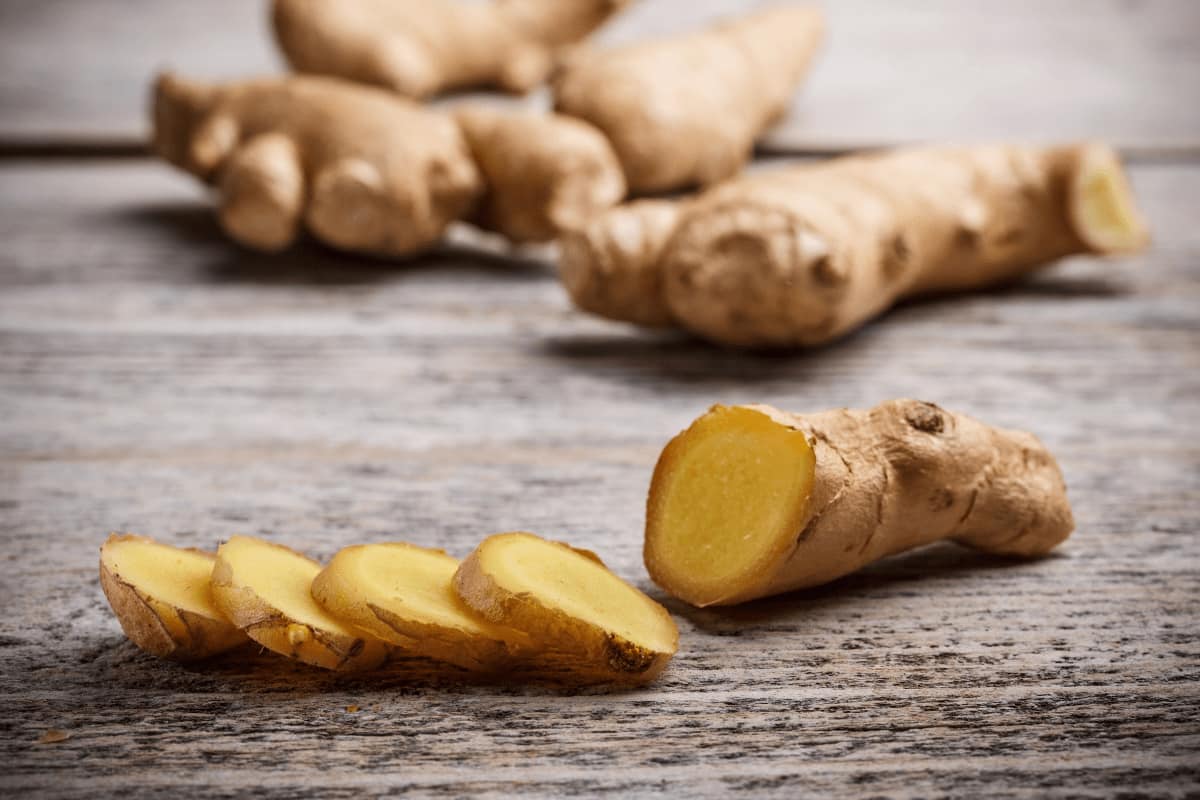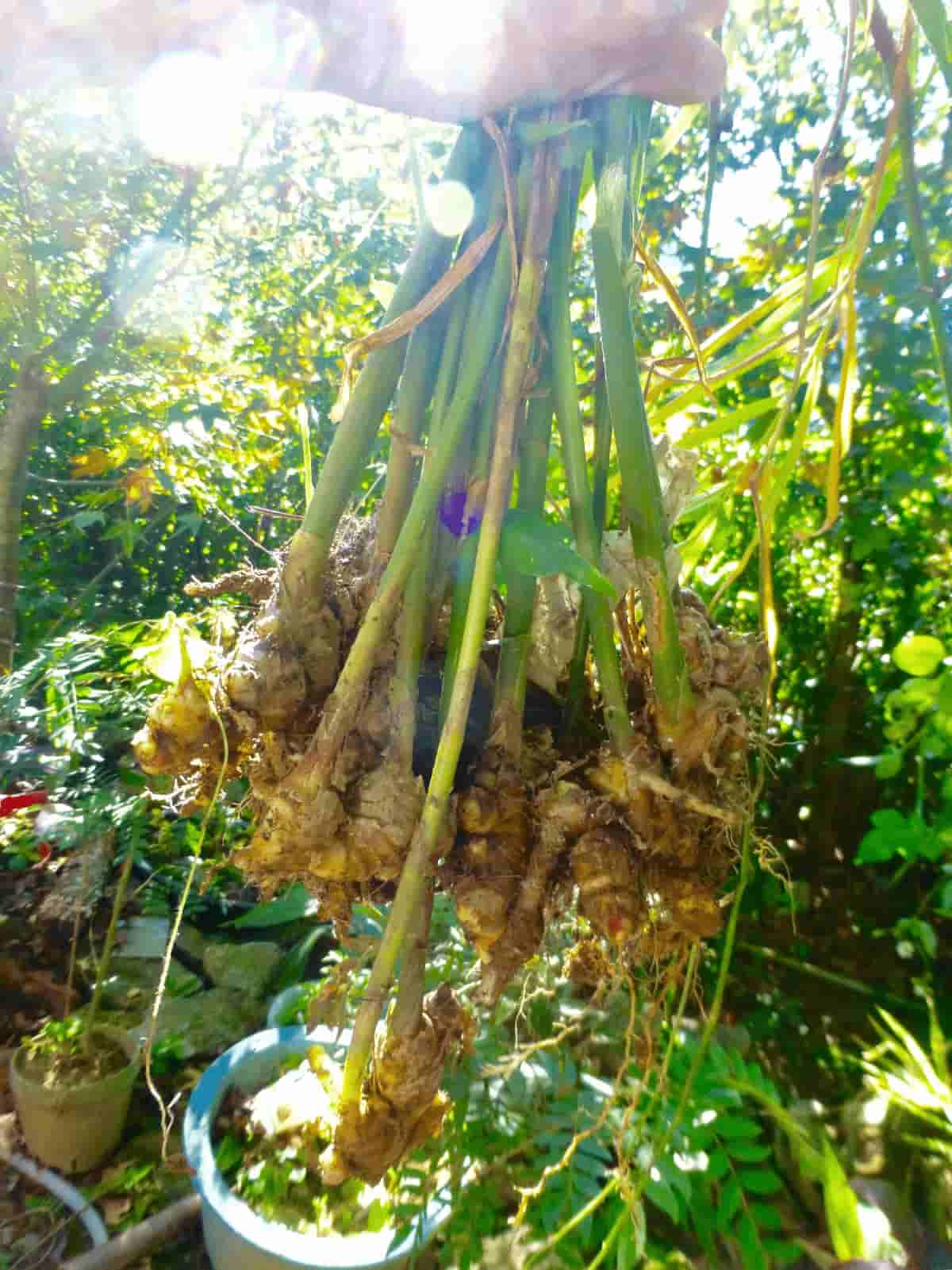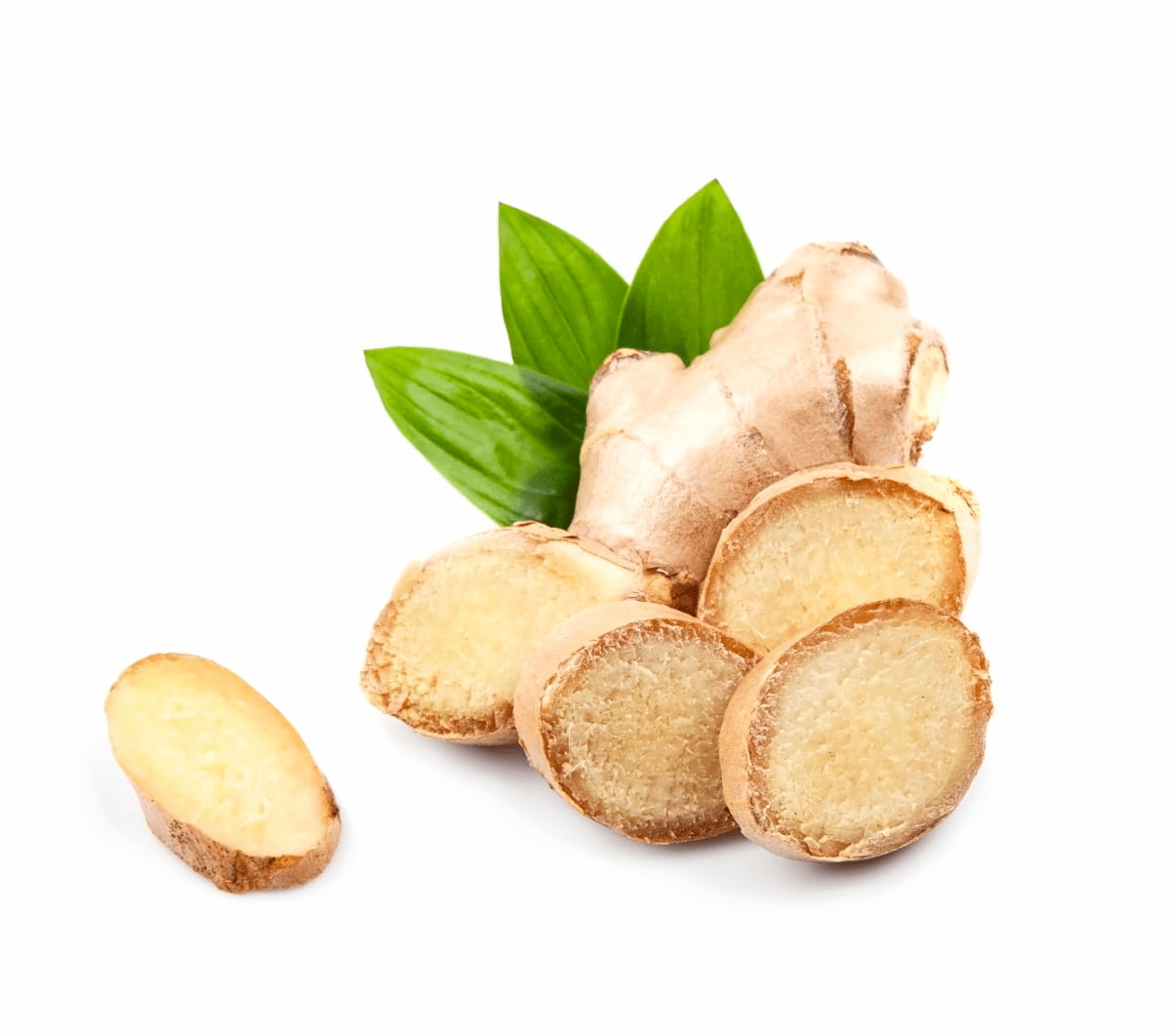Unravel the secrets to a flourishing ginger harvest with our comprehensive guide on fertilizer requirements and expert recommendations. Discover easy-to-read data-backed insights for healthy ginger plants thriving in warm, tropical climates. Explore essential nutrients and optimal NPK ratios alongside organic alternatives to boost your gardening success. With accurate data and expert advice, this blog equips gardening enthusiasts with the knowledge to achieve bountiful yields and aromatic spices.

Ginger Fertilizer Requirements
Understanding Ginger Plant Basics
Ginger, a herbaceous plant in the Zingiberaceae family, is treasured for its aromatic rhizome used as a spice. Ginger plants are erect, reed-like perennials with multiple bases from which shoots wrap around one another. They bear cone-shaped, pale yellow flowers on shorter stems. The ginger plant reaches a height of 2 to 4 feet (0.6m to 1.2m) and is widely used as a spice, either fresh, dried or in powder form. Additionally, ginger essential oil can be extracted from the fresh rhizome. Valued for its medicinal properties, ginger remains popular in India and China.
Basic Requirements for Thriving Ginger Plants
As tropical plants, ginger thrives in warm, sunny climates with deep, well-draining loamy soil rich in organic matter. An optimal soil pH falls between 5.5 and 6.5, while soil temperature at planting should not dip below 25°C (77°F), with a minimum requirement of 15.5°C (59.9°F). Annual rainfall of approximately 250cm to 300cm is best, with additional irrigation in case of insufficient rainfall. However, ginger plants dislike waterlogged soils.
In case you missed it: Ginger Farming (Organic), Planting, Harvesting, Yield

The Best Fertilizers for Ginger: Boosting Your Harvest with Expert Recommendations
- Miracle-Grow 146002 Water-Soluble Bloom Booster: This water-soluble fertilizer on Amazon promotes robust flowering and healthy rhizome growth.
- Fox Farm Big Bloom Liquid Concentrate Fertilizer: Known for its organic formula, this liquid concentrate enhances soil fertility and stimulates root development.
- Dr Earth Organic Vegetable & Herb Poly Fertilizer: Ideal for organic gardeners, this poly fertilizer offers a balanced nutrient blend for optimal ginger growth.
- Down to Earth Organic All-Purpose Fertilizer Mix: This all-purpose fertilizer contains a higher phosphorus ratio than potassium and nitrogen, making it suitable for ginger plants. It helps with both above-ground and below-ground growth.
- Burpee Natural Purpose Fertilizer: With a 4-4-4 NPK composition, this mild yet effective fertilizer is ideal for young ginger plants. It works well for both indoor and outdoor ginger cultivation.
- MARPHYL Organic Liquid Fertilizer: This liquid fertilizer, derived from marine phytoplankton, is a fast-acting solution for rapid growth. It is non-toxic and safe for pets and toddlers. Its organic composition provides a range of nutrients, including nitrogen, phosphorus, potassium, vitamins, and essential fatty acids.
- Lilly Miller All Purpose Planting & Growing Food Fertilizer: With a balanced 10-10-10 mineral ratio, these slow-release pellets offer a constant nutrient supply to ginger plants. It can be used for both indoor and outdoor plants.
- The Andersons PGF Balanced Fertilizer: This fine-grained fertilizer evenly distributes nutrients and minerals in the soil, effectively supporting ginger and other plants. It has a 10-10-10 mineral ratio and micronutrients like iron for greener foliage.
- Diamond K Gypsum Organic Grade Sulfate Fertilizer Powder: With a 0-0-50 ratio, this potassium-rich fertilizer promotes rhizome formation in ginger plants. Several applications throughout the growth season are recommended.
- Ortho-Phosphate Liquid Fertilizer: Suitable for large-scale ginger cultivation, liquid fertilizer can be diluted with water and applied through an irrigation system. It improves plant tolerance to drought, enhances vitality, and reduces crop stress.
Fertilizer Guidelines for Ginger Plants
If the ginger is planted in nutrient-rich soil, additional fertilizer may not be necessary. Testing the soil’s fertility is crucial before applying fertilizer. A small amount of complete liquid fertilizer every month or a few weeks can improve yield in poor soils. Pellet or granular fertilizer can also be applied 10 to 12 inches away from the ginger’s side to avoid damage. Begin fertilizing once shoots emerge and continue regularly, especially in regions with heavy rainfall that can leach nutrients.
The Right Fertilizer for Ginger: Low-Nitrogen and Potassium-Rich
The best fertilizer for ginger is one with low nitrogen content, like NPK 10-20-20, as excessive nitrogen best promotes leaf growth at the expense of rhizome development. Fertilization should stop once the ginger starts flowering. Amending the soil with potassium-rich fertilizer as the ginger matures is essential to produce plump rhizomes. Besides chemical options, organic fertilizers like fish emulsion and seaweed extract are suitable alternatives.
In case you missed it: Ginger Farming Techniques In Container Gardening

Harvesting and Storing Ginger
Harvest mature ginger, which takes about eight to 10 months, promptly to preserve its weight and taste. For storage, clean and fresh ginger should be kept in a cold environment with temperatures between 10°C to 15°C. Dried ginger can be stored in solid or ground form in clean, dry containers. Remember to rotate the cultivation area to prevent reduced yields due to nutrient depletion or use organic compost and fertilizers to maintain soil fertility.
NPK Ratio for Ginger Cultivation
The NPK ratio for ginger cultivation as it determines the balance of essential nutrients for optimal growth. A balanced NPK ratio of 1:1:2, such as 4-4-8 or 6-6-12, is recommended. Nitrogen (N) supports vigorous vegetative growth, enabling the development of healthy and lush ginger foliage. Phosphorus (P) is essential for strong root systems and robust rhizome formation, contributing significantly to crop yield. Potassium (K) improves plant disease resistance, water uptake, and nutrient transport.
Micronutrient Requirements for Ginger Plants
Apart from the primary nutrients (NPK), ginger plants also require essential micronutrients to achieve their full potential. Zinc, iron, manganese, copper, and boron are crucial micronutrients that catalyze various enzymatic reactions. These reactions are pivotal for photosynthesis, protein synthesis, and other essential metabolic processes.
Deficiencies in micronutrients can result in stunted growth, yellowing of leaves, and reduced rhizome yield. Regular foliar application of a ginger-specific micronutrient mixture during crucial growth stages helps meet these micronutrient requirements and ensures healthy and robust ginger plants.
Best Time to Apply Fertilizer to Ginger
The timing of fertilizer application significantly impacts ginger growth and productivity. Ideally, soil preparation with well-decomposed organic matter and compost should be done before planting. This enriches the soil with essential nutrients, strengthening ginger plants’ foundation.
In case you missed it: Ginger Cultivation Project Report, Farming Economics

Additionally, the first round of fertilization can be done during early growth stages to provide essential nutrients for initial development. A second round of fertilization is recommended during active growth periods to support continuous nutrient supply, especially during rapid vegetative growth and rhizome formation.
Fertilizer Application Methods for Ginger
Broadcasting and pit application are two primary methods for fertilizer application in ginger cultivation. Broadcasting involves spreading fertilizers evenly over the entire growing area before planting. This method ensures uniform nutrient distribution and is suitable for larger cultivation areas.
On the other hand, pit application involves placing fertilizers directly into planting pits during ginger seedling placement. This method provides direct nutrient delivery to the root zone, promoting quick absorption by the young plants. Modern approaches to precisely applying nutrients to the root zone by drip or foliar application. Choosing the appropriate application method depends on the scale of cultivation and available resources.
Slow-Release Fertilizers for Ginger Cultivation
Slow-release fertilizers are highly favoured in organic ginger farming due to their gradual nutrient-release capabilities. Compost, well-rotted manure, and organic amendments fall into this category. Slow-release fertilizers ensure a steady and sustained supply of nutrients to ginger plants, reducing the risk of nutrient leaching and minimizing the risk of over-fertilization. These natural fertilizers also improve soil structure, enhance water retention, and foster a healthy soil ecosystem, benefiting overall plant health and productivity in the long run.
Role of Organic Matter in Ginger Fertilization
Organic matter, like compost and well-rotted farmyard manure, is a cornerstone of successful ginger fertilization. Incorporating organic matter into the soil provides essential nutrients and improves soil structure and fertility. Organic matter enhances the soil’s water-holding capacity, allowing ginger plants to access moisture during dry periods.
Moreover, it fosters beneficial microbial activity, which aids in nutrient recycling and makes nutrients more available to the plants. Organic matter also serves as a slow-release nutrient reservoir, providing a continuous supply of essential elements throughout the growing season. It promotes sustainable and eco-friendly farming practices while improving crop yields and ensuring the health of the soil for future ginger cultivation.
Fertilizer Requirements for Ginger grown in Containers
- Limited Space: Growing ginger in containers requires careful attention to nutrient needs. Due to limited space, container-grown ginger has less access to nutrients from the surrounding soil.
- Balanced NPK: Select a balanced organic fertilizer with an equal NPK ratio (1:1:1) or slightly higher potassium (K) for container-grown ginger. This helps maintain a healthy balance of foliage and rhizome growth.
- Slow-release Fertilizers: Opt for slow-release organic fertilizers, like compost or well-rotted manure, to provide a steady nutrient supply over time. This minimizes the risk of over-fertilization and nutrient leaching.
- Frequent Feeding: Container-grown ginger may need more frequent fertilization due to nutrient depletion in confined spaces. Provide nutrients every few weeks during the growing season.
In case you missed it: Ginger Farming Income (Adrak), Production Cost, Profit

Fertilizer Recommendations for Ginger in Different Soil Types
At planting, applying well-decomposed cattle manure or compost at a rate of 25-30 tonnes/ha either by broadcasting or in planting pits is recommended, and this is based on location and soil types. Additionally, using neem cake at 2 tonnes/ha during planting helps reduce rhizome rot disease and nematode incidence while increasing yield.
- In Kerala, Apply FYM 30 t/ha; NPK 70:50:50 kg/ha. P is fully applied at planting, half N and K are added at 45 DAP, and the remaining N and K at 90 DAP.
- In Karnataka, Use FYM/compost 25 t/ha; NPK 100:50:50 kg/ha. P and K are applied entirely at planting, and N is split with half at 30-40 DAP and the other half at 60-70 DAP.
- In Orissa, Apply FYM 25 t/ha; NPK 125:100:100 kg/ha. Total P and half K are applied as basal dose, and N and K are split into two applications at 45 and 90 DAP.
- In Meghalaya, Use FYM 10 t/ha; NPK 60:90:60 kg/ha.
- Applying zinc fertilizer up to 6 kg zinc/ha (30 kg zinc sulfate/ha) at planting improves yield in Zinc-deficient soils.
- Additionally, foliar application of a ginger-specific micronutrient mixture twice, at 60 and 90 DAP, is recommended for better results.
Effect of Soil pH on Ginger Fertilizer Requirements
Soil pH plays a major role in nutrient availability to ginger plants. Ginger thrives in slightly acidic to neutral soils, with a pH range of 5.5 to 6.5. Maintaining the right pH level ensures the plants efficiently uptake essential nutrients. When soil pH deviates from the suitable range, certain nutrients may become less available to ginger, resulting in nutrient deficiencies or toxicities. To address this, periodic soil testing is recommended to monitor soil pH levels and make necessary adjustments. Liming can raise soil pH if it is too acidic while adding organic matter can help lower pH levels if the soil is too alkaline.
Importance of NPK in Ginger Fertilization
Nitrogen supports the formation of chlorophyll and proteins, which are essential for robust vegetative growth, leaf production, and overall plant vigour. Adequate nitrogen ensures healthy foliage, enhancing the plant’s ability to harness energy from sunlight and carry out essential physiological processes.
Phosphorus is crucial for root development, ensuring solid and extensive root systems to support the growth of the ginger plant. It is particularly vital during the initial growth stages, facilitating the establishment of healthy young plants. Potassium enhances the plant’s overall health and resilience, playing a key role in water uptake, disease resistance, and the efficient transport of nutrients within the plant.
- Less Nitrogen, More Potassium: Ginger requires less nitrogen and more potassium in its fertilizer. Excessive nitrogen can lead to excessive foliage growth at the expense of rhizome development.
- Equal NPK Ratio: An equal ratio of NPK (1:1:1) can also be effective for ginger plants. However, the emphasis should be on providing ample potassium.
- High Potassium Requirement: Ginger typically needs a significant amount of potassium, which may require several applications during its growth stages.
In case you missed it: Ginger Diseases, Pests, Symptoms, And Control

Foliar Feeding as a Supplement to Ginger Fertilization
During foliar feeding, nutrients are sprayed directly onto the leaves, which are absorbed through the stomata and utilized immediately by the plant. This method is particularly beneficial during periods of high nutrient demand or when the root system may not effectively take up nutrients from the soil due to stress or adverse environmental conditions.
Foliar feeding can enhance nutrient uptake efficiency, especially micronutrients, and improve plant growth and health. However, avoiding over-fertilization and carefully following recommended application rates to prevent leaf burn or other negative effects is essential.
Fertilizer Recommendations for Organic Ginger Farming
Instead of synthetic chemical fertilizers, organic growers rely on various natural sources to enrich the soil with essential nutrients. Compost, well-rotted farmyard manure, bone meal, seaweed extract, and other organic amendments are commonly used to provide a balanced supply of nutrients to ginger plants. These organic fertilizers deliver essential nutrients, improve soil structure, promote beneficial microbial activity, and enhance soil health.
Conclusion
To ensure healthy and productive ginger plants, they must meet their specific fertilizer requirements. Opt for a balanced NPK ratio, prioritize potassium, and consider slow-release organic fertilizers. Organic sources offer sustainable and chemical-free options for optimal ginger growth.
- How to Build a Low-budget Goat Shed: Cheap Ideas and Tips
- Goat Farming Training Programs in India: A Beginner’s Guide
- Types of Pesticides Used in Agriculture: A Beginner’s Guide
- Economical Aquaculture: A Guide to Low-Budget Fish Farming
- 15 Common Planting Errors That Can Doom Your Fruit Trees
- How to Make Houseplants Bushy: Effective Tips and Ideas
- Innovative Strategies for Boosting Coconut Pollination and Yield
- Pollination Strategies for Maximum Pumpkin Yield
- The Complete Guide to Chicken Fattening: Strategies for Maximum Growth
- Natural Solutions for Tulip Problems: 100% Effective Remedies for Leaf and Bulb-Related Issues
- Revolutionizing Citrus Preservation: Towards a Healthier, Greener Future
- Natural Solutions for Peony Leaf and Flower Problems: 100% Effective Remedies
- Maximizing Profits with Avocado Contract Farming in India: A Comprehensive Guide
- Natural Solutions for Hydrangea Problems: 100% Effective Remedies for Leaf and Flowers
- The Ultimate Guide to Choosing the Perfect Foliage Friend: Bringing Life Indoors
- From Sunlight to Sustainability: 15 Ways to Use Solar Technology in Agriculture
- The Ultimate Guide to Dong Tao Chicken: Exploring from History to Raising
- The Eco-Friendly Makeover: How to Convert Your Unused Swimming Pool into a Fish Pond
- Mastering the Art of Delaware Chicken Farming: Essentials for Healthy Backyard Flocks
- 20 Best Homemade Fertilizers for Money Plant: DIY Recipes and Application Methods
- How to Craft a Comprehensive Free-Range Chicken Farming Business Plan
- Brighten Your Flock: Raising Easter Egger Chickens for Beauty and Bounty
- How to Optimize Your Poultry Egg Farm Business Plan with These Strategies
- Subsidy for Spirulina Cultivation: How Indian Government Schemes Encouraging Spirulina Farmers
- Ultimate Guide to Raising Dominique Chickens: Breeding, Feeding, Egg-Production, and Care
- Mastering the Art of Raising Jersey Giant Chickens: Care, Feeding, and More
- Ultimate Guide to Raising Legbar Chickens: Breeding, Farming Practices, Diet, Egg-Production
- How to Raise Welsummer Chickens: A Comprehensive Guide for Beginners
- How to Protect Indoor Plants in Winter: A Comprehensive Guide
- Ultimate Guide to Grow Bag Gardening: Tips, Tricks, and Planting Ideas for Urban Gardeners
- Guide to Lotus Cultivation: How to Propagate, Plant, Grow, Care, Cost, and Profit
- Agriculture Drone Subsidy Scheme: Government Kisan Subsidy, License, and How to Apply Online
- Ultimate Guide to Raising Araucana Chickens: Breed Profile, Farming Economics, Diet, and Care
- Bringing Hydroponics to Classroom: Importance, Benefits of Learning for School Students
- Ultimate Guide to Raising Polish Chickens: Breed Profile, Farming Economics, Diet, and Care
- Ultimate Guide to Raising Australorp Chickens: Profile, Farming Economics, Egg Production, Diet, and Care